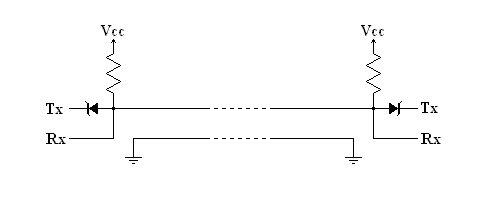I'm using msp430F149 's uart ports (ie TXD and RXD) to communicate with another MCU device. Due to some specific hardware consideration of my target device, I have to use a single wire to make a duplex channel to that MCU device. I've been working on the solution for a week, now I'm doubt if it is even possible to do that.
And I have tried with the following idea, but all the trials have been failed so far :
Initialize and enable UART module.(TX module enabled and RX module disabled)
Send 8 bytes , one byte each time in the TX interrupt service routine. Maintain tx_counter to keep track of the index of the sending byte, and set it to zero before it tries to send 9th byte and disable TX module & enable RX module. By the protocol , the target device will reply a hand shake (8 bytes) , so likewise in the RX interrupt service routine I disable RX module & enable TX module in the 9th iteration.
Roughly speaking I intended to use a single wire for duplex uart communication in this way.


